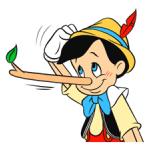Medicine
Our culture likes lists. Especially if they are distilled down versions of unwieldy, complex topics.
We don’t have to look very far these days to find wellness facilities touting this or that intravenous (IV) infusion for “detoxification” and “revitalization.” Albeit vitamin concoctions to anti-aging
Today is World Cancer Day which means we internationally encourage raising awareness about cancer while promoting and supporting efforts in prevention, early detection and advancement in treatments.
Let’s be real, some of us are ideal patients while the remainder of us could certainly use a little work in this arena. Admittedly, doctors are the worst.
The high cost of prescription drugs is a source of universal frustration.
There is a lot of chatter whenever a larger baby is born and exceeds a hospital’s record. The media storm that follows, social and mainstream, makes for the viral nature of the images.
As 2018 wraps up, it is always worthwhile to take a walk down memory lane to remind us of what captivated our attention this year.
With the rapid pace of technology spreading a word or image globally in a matter of seconds, the old saying “a lie gets halfway around the world before the truth has a chance to get its pants on” is ever the more relevant today.
The media trope “if it bleeds, it leads” is at play in undermining accurate messages with respect to the status of vaccine compliance. A fear-based technique intended to capture the audience by news outlets is, sadly, a tried-and-true one.












